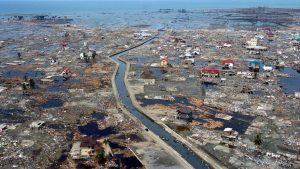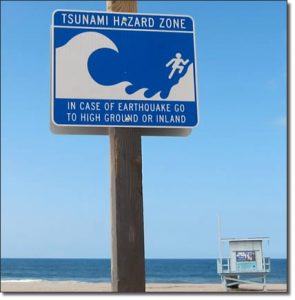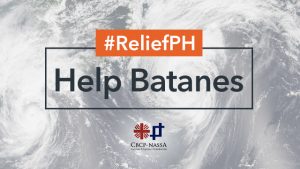
Geologists call the 2004 tsunami a “monster earthquake.” An earthquake that shocks last longer than usual. Followed by mountains of waves crashing onto the beach at breakneck speed.
The December 2004 tsunami wave was recorded as the worst natural disaster in modern history. An event with an unimaginable dimension, in terms of the number of victims, as well as from the geological aspect.
What happened?
Giant waves occur after an earthquake under the sea, about 100 kilometers west of the coast of Sumatra, at 07:59 local time. The epicenter was at a depth of about 30 kilometers below the seabed. There are two colliding continental plates. Severe pressures then cause one plate to shift down another plate. That happened on December 26, 2004, on a 1000 kilometer line. This is a very rare event.
The resulting earthquake lasted up to 10 minutes. Usually, this kind of earthquake only lasts a few seconds. According to various calculations, the strength of the earthquake at that time reached 9.1 to 9.3 on the Richter scale and is the second-largest earthquake in the last 100 years. In 1960, an earthquake in Chile was recorded at 9.5 on the Richter scale.
Why the giant tsunami waves appear?

One of the continental plates shifted up to 15 meters, so it moves vertically. That caused the seabed in several places to move up to 10 meters. That’s what makes the sea level at the site rises suddenly. The water that is pushed then forms a big wave, which moves at very high speed, as fast as a jet, and moves towards the coast. In deep-sea areas, fast-moving water is not very pronounced on the surface. But toward the increasingly sloping coastal areas, the waves will roll higher and higher. On the coast of Sumatra, wave height has reached about 30 meters.
What about fatalities and damage from the tsunami?
In the Indian Ocean, from Sumatra (Indonesia) to the Andaman Islands, Thailand, South India, Sri Lanka and parts of Africa, there were around 230,000 people killed in 14 countries. The worst damage occurred in Sumatra, with around 170,000 dead. All buildings in the coastal area were destroyed, in some places up to a distance of five kilometers on land. Millions of people are left homeless.
Who has the possibility of surviving?
Tourists who are diving in the middle of the sea, feel the tides are faster, but they experience nothing. Also, the fishermen who are at sea, do not feel there will be giant waves. Residents who react quickly and can flee to the high ground are also saved. People who live at the top of the house, who are tall enough and strong enough to resist the lunge of water and things that are dragged along with the water, can survive.
Are there any warnings for residents?
No one in the disaster area had a tsunami emergency plan at that time. United States tsunami warning center in Hawaii immediately realized and make an emergency call, that there were a great earthquake and the threat of a terrible giant wave. But they did not know which parties to contact in the disaster area. So they issued a general warning.
What has been done since the great disaster?

Now a tsunami early warning system has been built along the waters between Indonesia and Thailand. Every change in the water level is monitored for 24 hours, and there is an automatic warning if there is a sudden change. The early warning center in Jakarta is ready to send warnings to regions throughout Indonesia.
With the help of German experts from the Geological Research Center in Potsdam, the tsunami early warning system was successfully functioning. Warnings will also be sent via SMS to regions. Many hotels in the coastal area now have warning boards and evacuation plans in case of a tsunami threat.
How big is the risk of a tsunami in the future?
Tsunamis cannot be predicted. Tensions between colliding plates always occur. Continental plates to the west of Sumatra have been under pressure until now. In April 2012, there was another underwater earthquake in the region with a magnitude of 8.6 on the Richter scale. But there was no large and wide tsunami wave. Why? Because the plates were moving horizontally.




